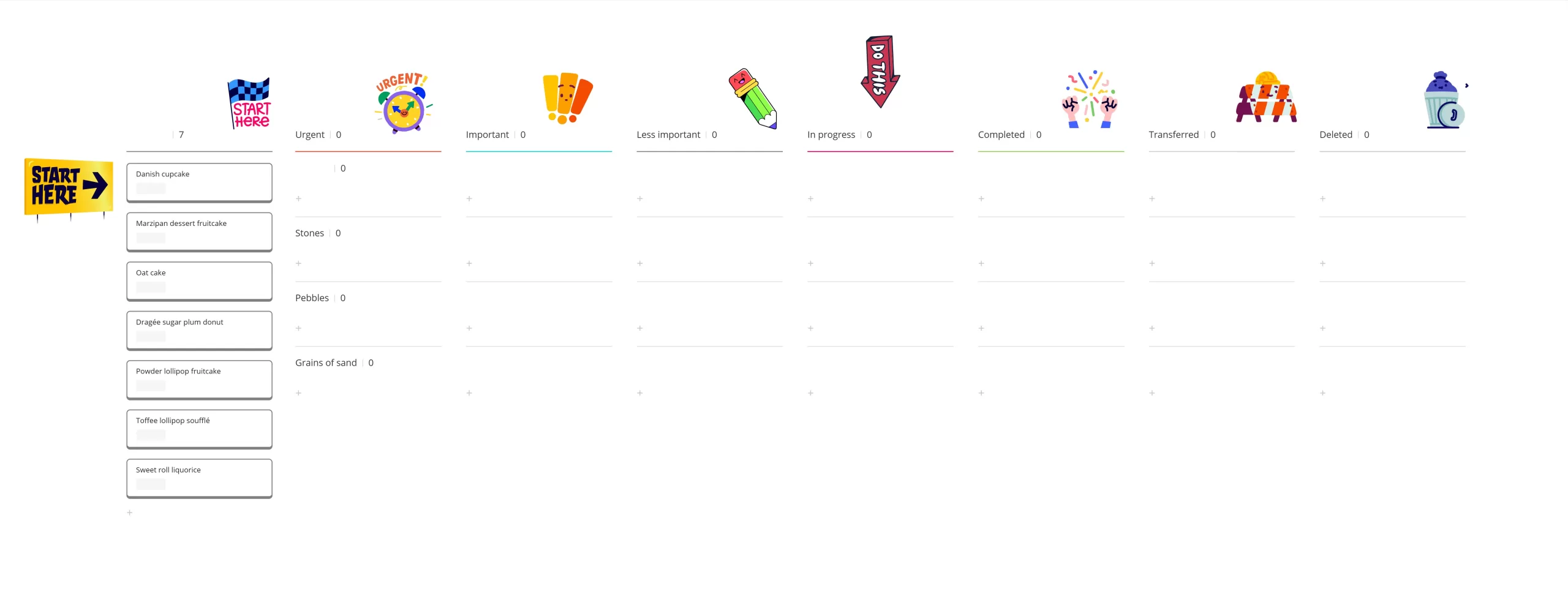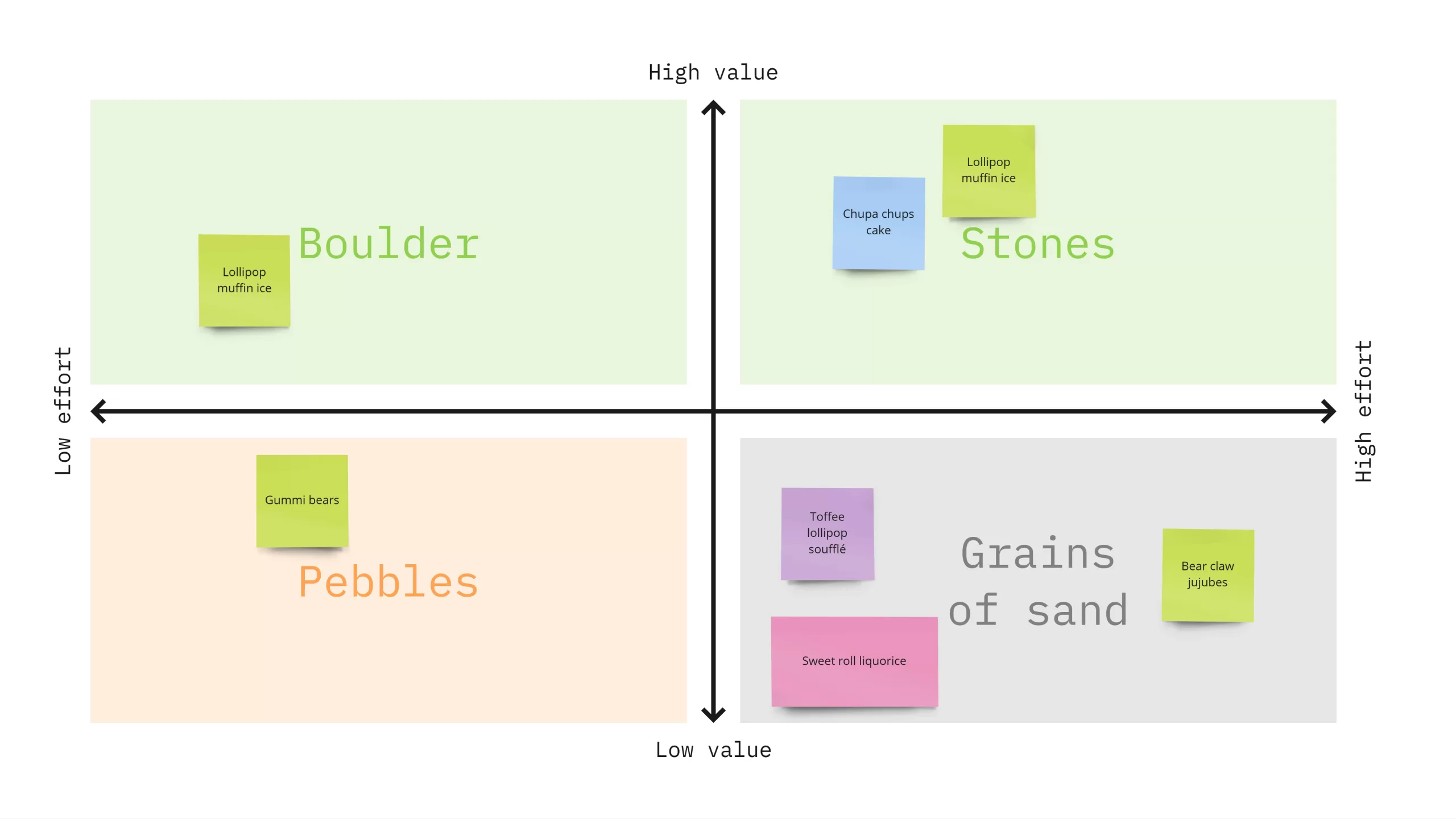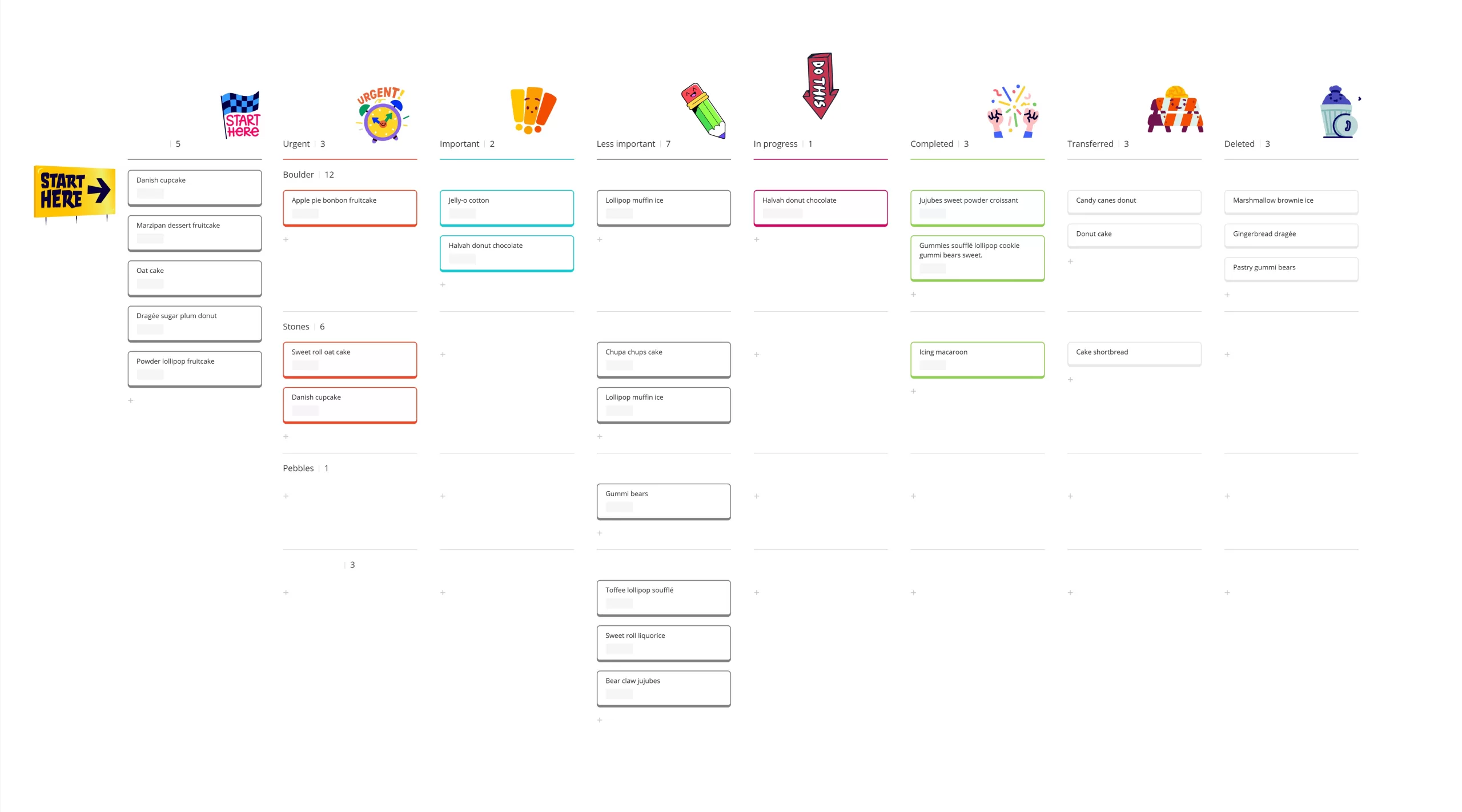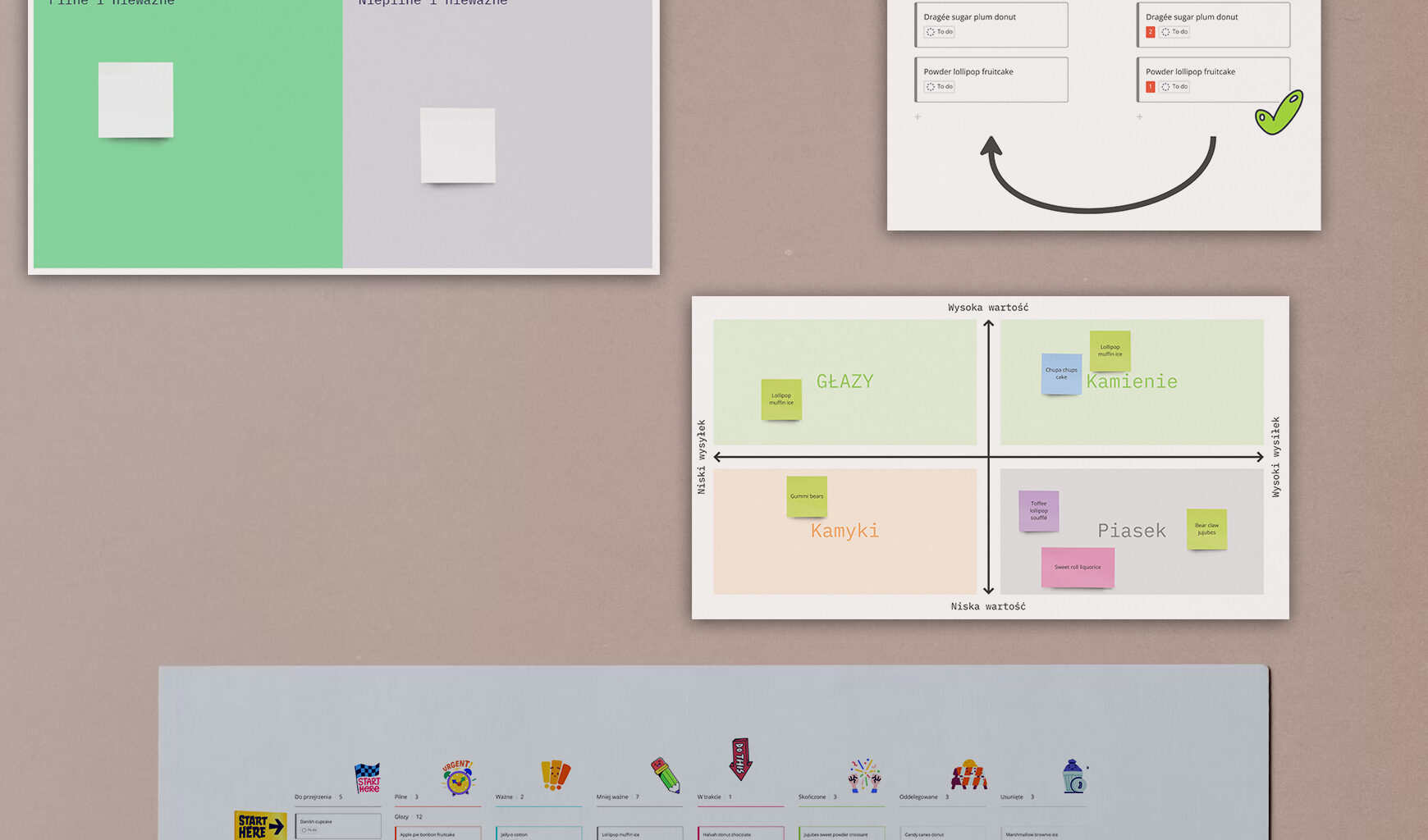Prioritization is essential for us to be able to achieve our goals, especially in the workplace. It involves the process of ordering tasks in terms of their importance, urgency, and relevance to achieving the desired outcome.
The way we prioritize our work (and beyond) affects the success of tasks and projects, as well as the engagement of teams. Proper prioritization is also a key skill for any leader. It is particularly necessary for middle and senior managers and project managers (including technical managers) to master.
Setting priorities also helps to manage stress levels because if they are set correctly, we focus on the most important tasks. This, in turn, increases our productivity, which I will talk about in my next article.
Data on task prioritization
When we look at the literature and articles related to managing tasks or entire projects, we may get the impression that everything has already been said on the subject. We should therefore have no problems with prioritisation.
However, the data are inexorable and show that it is not an entirely straightforward process. Despite awareness of the problem and the great need to prioritize tasks, we still:
We spend only 40 per cent of our working time on our main tasks/goals.
In addition, it turns out that even this time is not used efficiently because:
as much as 41% of our tasks are never completed.
Hardly, only 20% of people audit their time to actually check their productivity. And most importantly:
85% of people admit that they don’t know how to prioritise.
Task prioritization methods that work
I will now show a few different ways we can prioritize tasks which I use myself. That’s why I won’t describe Effort, Impact or Must-haves, Should-haves, Could-haves, and Won’t-haves methods here, but will only focus on those solutions that give us immediate relief.
Time management statistics show that as many as 88% of people who do not set goals fail to achieve results in their work.
Whichever method we use, before we start prioritizing, let’s sit down and think about our deadlines, the resources we have, and the consequences that can happen if we prioritize badly or don’t do it at all.
Let’s also remember the Pareto principle that says that of the things we do in a day, only 20% produce 80% of our results.
Structured prioritization
Structured prioritization is a process for people who like order and full control over what they do. It helps to organize large amounts of complex tasks.
According study, 28% of people who use the ‘manage what’s coming’ technique feel that their work is never under control.
The method I often use consists of several elaborate steps.
We list all our tasks
We collect all our tasks into one list (preferably in the form of a Kanban board). The board can consist of items such as:
- To review / New – this is where we put all our tasks
- Urgent
- Important
- Less important
- In progress
- Deleted (with a description of why, so we don’t forget in future)
- Delegated
- Completed

We divide tasks into three categories
We separate the tasks in the first column into:
- urgent,
- important,
- less important.
Importantly, we don’t succumb to the temptation to make the long-lying things that are less important into these higher priority tasks.
We assess the value of the tasks in each column
The next step is to assess the value of the tasks in each column in terms of what impact they might have on the organization, the goal, the project, the product, or the customer (your choice) and how much dispatch we will need to do to get the job done.
We can imagine that we are a big giant who would like to clean up his yard of the stones lying around. We would start with the big ones first. By cleaning them up first, we might discover that there are a few smaller ones lying underneath that we wouldn’t normally notice.
The greater the impact a task has on achieving a goal, the more value we give it and, therefore, the higher the priority. Then, if there are tasks that have the same impact and value, we put them in order according to the estimated effort we need to put into them, and we complete the easiest ones first (the reverse can also be done, but only if we have high morale).
In summary, we can categorize our tasks into:
- Boulder- tasks of high value but requiring little effort to complete (let’s not attach importance to the fact that boulders are heavy, here they are just a symbol),
- stones – tasks of high value and requiring a lot of effort,
- pebbles – tasks of low value and requiring little effort,
- and grains of sand – low value and high effort.

If a task requires cooperation with others, and we do not currently have people on the teams capable of working on a high-priority task, it becomes a lower-ranking task.
We review
If there are a lot of tasks on our list, then all the ones we mark as sand can either be skipped or simply end up in the bin.
We delegate what others can do better for us. No matter how tempting it may seem to take on every task, delegating or outsourcing some responsibilities actually leads to greater productivity and helps build team confidence. Just don’t forget to prioritize the task in question before delegating. I often find that some people determine at the very beginning of reviewing/categorizing tasks whether a task is delegatable. I am not a fan of this approach precisely because we never go back later to clearly identify how important the task is from our point of view.
Planning and execution of tasks
We then move on to planning. What we can, we put on our calendar so that we plan the exact time to complete the tasks. The space provided for a task during the day increases our productivity. Ultimately, our board may look something like this:

Prioritization for those who like maths and worksheets
I found, some time ago, a very cool article on how to make it easier to prioritize tasks when we are not sure how to classify them. The author of the text mainly refers to work on products, but the methods he suggests can also be useful in our daily work. They will especially appeal to those who still use worksheets to manage their tasks.
The percentage of organisations using spreadsheets to manage projects is 67%.
The value for each task is very easy to establish with this method. It consists of three simple steps, during which we need to determine:
- What is the benefit to the customer/product of performing the task? To do this, we use a scoring method where X > Y > Z, e.g. X = 30, Y = 20, Z = 10 points.
- Immediate benefit: X
- Short-term benefit: Y
- Long-term benefit: Z
- What is the impact of non-performance on the customer/product? As before A > B > C
- Immediate impact: A
- Short-term impact: B
- Long-term impact: C
- What is the effort involved in completing the task. This is particularly important because an organisation’s resources are always limited. To characterise the workload, the categories P > Q > R can be used:
- Low: P
- Medium: Q
- High: R
After assigning a quantitative result to each element, we perform the operation:
(X|Y|Z) – (A|B|C) (P|Q|R)
Tasks whose result is closer to 0 should be executed first.
| Tasks | What is the benefit to the customer/product of implementation | What impact does non-implement have on the customer/product | What is the effort involved in performing the task | Result |
|---|---|---|---|---|
| Danish cupcake | 10 | 20 | 20 | 10 |
| Marzipan dessert fruitcake | 10 | 30 | 20 | 0 |
| Oat cake | 30 | 40 | 10 | 0 |
| Dragée sugar plum donut | 20 | 30 | 30 | 20 |
| Powder lollipop fruitcake | 20 | 20 | 20 | 20 |
Prioritisation using reverse order.
This method is very simple in its operation and incredibly accessible. With it, it is possible to prioritize basically all our daily activities.
33% of people use ato-do list to manage their tasks and themselves in time.
I am not convinced that we should use it for very complex activities that can affect the entire organization, but if we keep our tasks on one big list, it will definitely help to prioritize them. I who works?
- We make two lists. On the first one, we write down all our tasks. The second list is left blank.
- We then look for an item on the first list that we know (absolutely) won’t get done or that we can’t complete right now. Simply one that we know has to wait.
- We save this item in the second list and get rid of it from the first list.
- We then repeat points 2-3 until the first list is completely deleted.
- The last step is that we do all of the ones in the second list in the reverse order of the one written down.

Prioritization using the Eisenhower matrix
Eisenhower was the 34th President of the United States. He held office for two terms from 1953 to 1961. He was a kind of champion of prioritization and productivity, as during his presidency, he launched programs related to, among other things:
- the creation of the Internet (DARPA),
- the conquest of space (NASA),
- the flight control system,
- and the peaceful use of alternative energy sources.
The president used to say:
“What is important is rarely urgent, and what is urgent is rarely important”.
In contrast, the hard data from reports states that:
‘The average worker spends 51% of each working day on low- or zero-value tasks’.
To distinguish urgency from importance, Eisenhower created a very simple matrix.

How to use it? It’s easy.
- Urgent and important? We do.
- Urgent and unimportant? We delegate.
- Non-urgent and important? Let’s plan it.
- Non-urgent and unimportant? We throw it in the bin.
We have many things that are urgent and important. We pick one, do it, and then do the next one. The whole philosophy.
Conclusion
There is no denying the fact that prioritizing tasks has a direct impact on our productivity. In turn, this in turn is one of the key factors that makes both us and our organizations successful. As research shows:
As a result of higher levels of employee productivity, profits in companies increase by an average of 21%.
Companies need employees, owners, and managers who deliver a lot of valuable work in a certain amount of time. Otherwise, they are unable to compete with others and implement broad-based innovation.
People who don’t know how to prioritise their tasks spend an average of 39% of the time they spend doing them stressed because of their workload.
That is a lot. This is why I strongly urge you not to wait and to sort out the reality around you as soon as possible.
Now that we know how to manage our priorities let’s take a look at productivity itself, without which even the best-planned activities cannot be realized.
Sources and supplementary material
https://www.proofhub.com/ https://reclaim.ai/blog/ https://www.lifehack.org/ https://www.zippia.com/advice/time-management-statistics/ https://inside.6q.io/ https://goremotely.net/blog/productivity-statistics/




